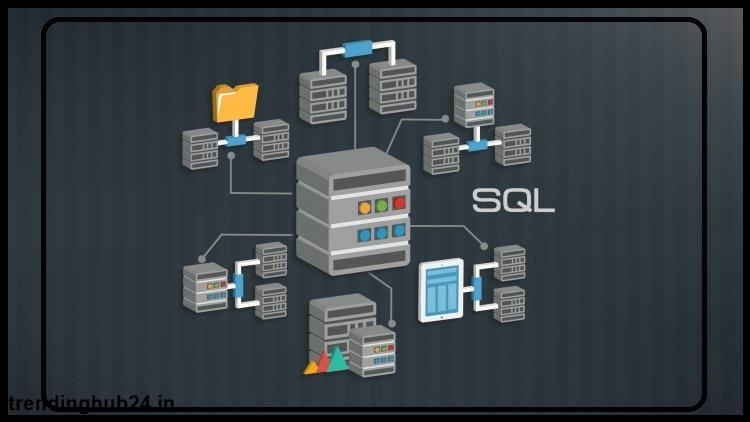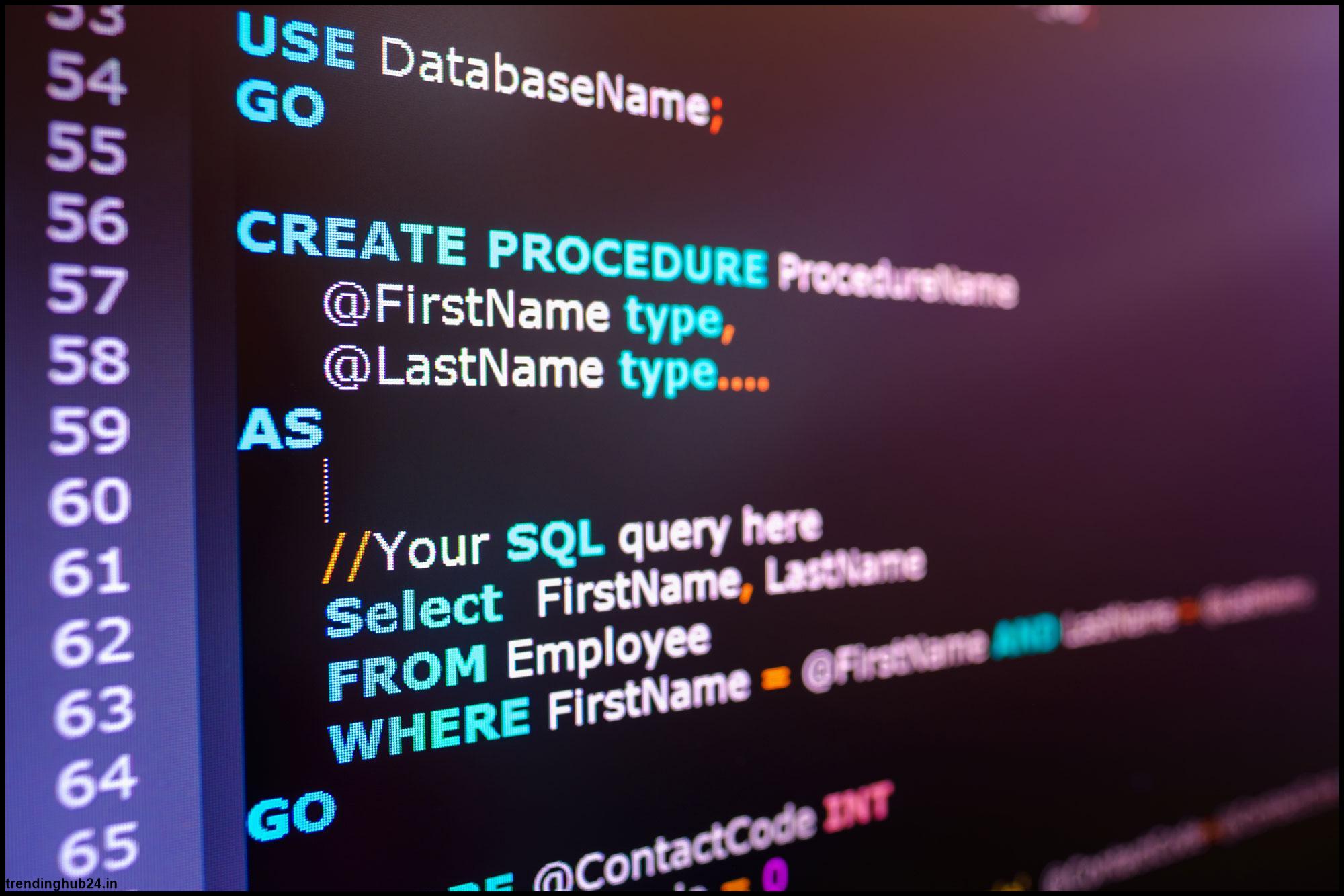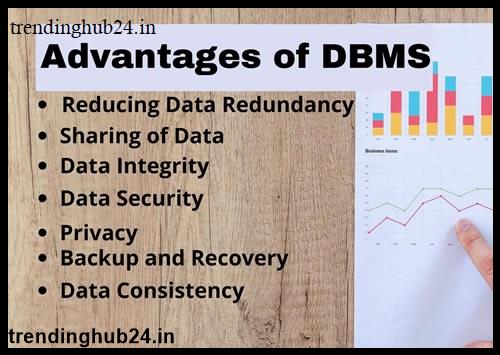Contact us for advertisement opportunities on Trending Hub24
📢 Contact Us For Advertise Here | +91 7355993756
What is SQL Lets learn And Know More About The SQL

It is a programming language used for managing and manipulating relational database.SQL stands for Structured Query Language
Table of Contents

It is a programming language used for managing and manipulating relational databases.QL stands for Structured Query Language. SQL provides a standardized way to interact with databases and perform various operations such as querying data, inserting, updating, and deleting records, creating and modifying database schemas, and managing access control.

SQL offers a rich set of keywords and functions to perform complex queries involving filtering, sorting, joining multiple tables, aggregating data, and more.
SELECT * FROM Employees; This query selects all columns (*) from the table Employees. SQL allows you to retrieve and manipulate data by writing queries that specify the desired operations. Relational databases organize data into tables with rows and columns, where each row represents a specific record and each column represents a data attribute.

SQL is widely used in database systems such as MySQL, Oracle, Microsoft SQL Server, PostgreSQL, and SQLite.
SQL is a declarative language, meaning that you specify what you want the database to do, and the database management system (DBMS) determines how to execute the query and retrieve the results.

Here's a simple example of an SQL query to retrieve all records from a table called "Employees":
SQL is a fundamental skill for working with databases and is used in various applications ranging from web development, data analysis, data science, and backend systems that rely on database management.
sql advantages

Data Manipulation: SQL provides a comprehensive set of commands and functions to manipulate and retrieve data from databases. It allows you to insert, update, delete, and query data easily, making it efficient for managing large volumes of structured data.

Data Integrity and Security:
SQL offers features to enforce data integrity and maintain data consistency. It supports constraints, such as unique keys, primary keys, foreign keys, and check constraints, which help maintain data accuracy. Additionally, SQL provides robust security mechanisms for controlling access to databases, including user authentication, authorization, and role-based permissions.
Scalability and Performance

SQL databases are designed to handle large amounts of data and scale effectively. They optimize query execution and offer indexing capabilities to enhance performance. With proper indexing and query optimization techniques, SQL databases can efficiently handle complex queries and large workloads.
Data Consistency
SQL databases adhere to the ACID (Atomicity, Consistency, Isolation, Durability) properties, ensuring data consistency. These properties guarantee that transactions are processed reliably and that data remains consistent even in the event of system failures or concurrent access
Standardization
SQL is an industry-standard language that is recognized and supported by most relational database management systems (RDBMS). This standardization allows developers and administrators to work with different database systems using a unified language, making it easier to switch between databases or work with multiple database vendors.
Data Analysis and Reporting
SQL's expressive querying capabilities enable powerful data analysis and reporting. It allows you to aggregate, sort, and filter data efficiently, enabling complex data analysis tasks. Additionally, SQL can be integrated with other tools and languages, such as Python or R, for advanced analytics and data visualization
Ease of Use and Versatility
SQL has a straightforward syntax and is relatively easy to learn and use. Its declarative nature allows users to focus on what data they want to retrieve or manipulate rather than how to retrieve it. SQL can handle a wide range of data-related tasks, from simple queries to complex data transformations and aggregations.
Data Integration
SQL can interact with various data sources and systems, making it an ideal language for data integration. It allows you to connect to external data sources, such as web services or other databases, and perform operations like data extraction, transformation, and loading (ETL).
Overall, SQL's benefits lie in its ability to efficiently manage, manipulate, and query structured data, ensuring data integrity, security, and scalability. Its standardization, versatility, and integration capabilities make it a powerful tool for a wide range of data-related tasks and scenarios.
Design -:
SQL departs from its theoretical foundations, relational models, and its tuple counters in several ways. Tables in that model are sets of tuples, whereas tables and query results in SQL are lists of rows; The same line can occur multiple times and the order of the lines can be used in queries (for example in a LIMIT clause). Critics have argued that SQL should be replaced by languages that return entirely to the basic premise: for example, Hugh Darwen and C.J. Schmidt.
Orthodoxy and Perfection -:
Early specifications did not support key features such as primary keys. Outcome groups could not be named, and subcategories were not defined. These were added in
The lack of sum types has been cited as a barrier to the full use of SQL's user-defined types. For example, in 2016 JSON support needed to be added by a new standard.
null -:
The concept of a faucet is the subject of some debate. A zero sign indicates the absence of a value and is different from a value of 0 for an integer column or an empty string for a text column. The concept of nulls implements the 3-value-argument in SQL,
Duplicate:-
Another popular criticism is that it allows duplicate rows, which allows integration with languages like Python, in terms of parsing due to their data types and their lack of modularity to accurately represent their data
Impedance Mismatch -:
In the same sense of object-related constraint mismatch, there is a mismatch between declarative SQL languages and the procedural languages in which SQL is typically embedded
SQL data types:-
The SQL standard defines three types of data types:-
1. Default data types
2. Built type
3. User-defined types.
The type created is one of ARRAY, MULTISET, REF(reference), or ROW. User-defined types have their constructors, observers, mutants, methods, inheritance, overloads, overrides, interfaces, and others. They are equivalent to classes in an object-oriented language Default data types are supported internally by the implementation
Default data types:-
characters (variables).
character form ( VARCHAR ).
Character-wide object (CLOB).
Types of National Character
National Character (NCHR).
The national character is different
National Character Large Objects (NCLOB).
of the binary type
bicyclic (bicyclic).
binary variable (verb).
binary large object (BLOB).
Numerical types
Exact numeric type (numeric, decimal, small, integer, large)
Approximate numeric type (float, real, double precision).
Decimal floating-point type (DECFLOAT).
DateTime type ( date, time , timestamp )
Types of intervals 1.1.
is a Boolean
XML is
JSON is the
